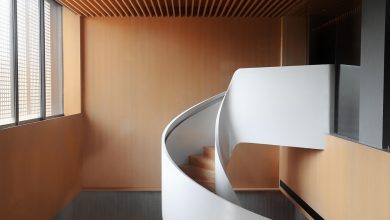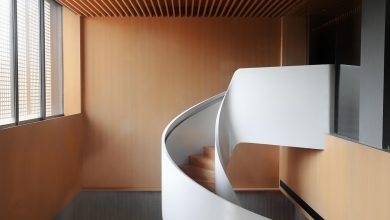Tiny House Myths Debunked
“`html
Tiny House Myths Debunked
Tiny house living is often misunderstood, leading to pervasive myths that can deter prospective owners. This article will address and debunk these common misconceptions, providing clarity on the realities of tiny house living. Readers will learn about the livability, cost, safety, and personalization of tiny homes, empowering them to make informed decisions.

Introduction to Tiny House Living
The tiny house movement has gained significant traction over the past decade, promoting a lifestyle focused on simplicity, sustainability, and minimalism. Tiny houses—typically defined as homes under 400 square feet—offer an alternative to traditional living, emphasizing efficient use of space and resources. However, with any emerging trend comes a set of myths that can cloud judgment and prevent individuals from embracing this lifestyle.
Debunking these myths is crucial for potential tiny house owners. Understanding the truth behind misconceptions about tiny living can lead to more informed choices and a greater appreciation for this unique lifestyle. Let’s uncover some of the most common myths associated with tiny houses.

- Myth 1: Tiny houses are not livable
- Myth 2: Tiny houses are only for minimalists
- Myth 3: Tiny house living is cheaper
- Myth 4: Tiny houses are unsafe
By addressing these misconceptions, we can shed light on the true nature of tiny house living.
Myth 1: Tiny Houses Are Not Livable
One of the most common myths is that tiny houses are unlivable, which stems from the belief that size equates to comfort. In reality, tiny homes can be designed for maximum livability, incorporating smart design elements that optimize space. Many tiny house residents report a high quality of life despite their smaller living areas.

Real-life experiences from tiny house inhabitants reveal a different story. Many of them express satisfaction with their cozy, functional spaces and emphasize that living in a tiny house fosters a sense of community and connection to nature. Features such as multifunctional furniture and clever storage solutions contribute to a comfortable living experience.
- Space Efficiency: Utilizing vertical space and multifunctional furniture.
- Comfortable Design: Personalizing with decor that reflects individual tastes.
- Community Living: Many tiny house owners enjoy being part of a tiny house community.
In summary, tiny houses can be highly livable spaces that cater to diverse lifestyles.
Myth 2: Tiny Houses Are Only for Minimalists
Another prevalent myth is that tiny houses cater exclusively to minimalists. While minimalism is a key aspect of tiny living, the reality is that tiny houses accommodate a wide range of lifestyles. Individuals from various backgrounds find joy and purpose in tiny living for different reasons.
People who choose tiny homes often do so to simplify their lives, reduce their environmental impact, or achieve financial freedom. However, many also incorporate personal style and comfort into their tiny homes, blending functionality with aesthetic appeal. Tiny houses can be customized to reflect the owner’s personality, showcasing unique designs and personal touches.
- Eclectic Styles: Tiny homes can feature modern, rustic, or bohemian designs.
- Personal Touches: Owners can include cherished belongings and art.
- Diverse Inhabitants: Artists, families, and retirees all thrive in tiny homes.
The diversity of lifestyles among tiny house owners proves that tiny living is not limited to minimalism.
Myth 3: Tiny House Living Is Cheaper
A common belief regarding tiny houses is that they are a financially smarter choice. While initial costs can be lower compared to traditional homes, the financial picture can be more complex. It’s important to consider both initial costs and long-term savings.
Initial costs may include purchasing land, building materials, and permits, which can add up quickly. Additionally, tiny house owners often encounter hidden expenses such as maintenance, insurance, and utility costs that can approach—or even exceed—those of conventional homes. Understanding these costs is essential for anyone considering making the switch to tiny living.
- Initial Costs: Land purchase, building materials, and labor can be substantial.
- Ongoing Expenses: Utilities, maintenance, and insurance need consideration.
- Potential Savings: Reduced mortgage or rental payments, and lower utility costs over time.
Overall, while tiny houses can be more affordable in some aspects, they come with their own set of financial challenges.
Myth 4: Tiny Houses Are Unsafe
Concerns about safety in tiny homes often stem from their smaller size and unconventional construction. However, tiny houses are subject to building codes and safety regulations just like any traditional home. Many tiny homes are built with safety in mind, featuring durable materials and modern construction standards.
Common safety features in tiny homes include fire-resistant materials, smoke detectors, and secure foundations. Additionally, many tiny homes are equipped with safety systems such as security alarms and emergency exits. By adhering to safety guidelines, tiny house builders ensure that their homes are secure and livable.
- Structural Integrity: Built to meet or exceed local building codes.
- Fire Safety: Equipped with smoke detectors and fire-resistant materials.
- Emergency Features: Secure exits and alarms for safety.
In conclusion, tiny houses can be safe and secure when built and maintained properly.
Myth 5: Tiny Houses Are Difficult to Maintain
Some people assume that maintaining a tiny house is more challenging than caring for a larger home. In fact, owning a tiny house often simplifies maintenance tasks due to the reduced size. Many tiny house owners find that they spend less time cleaning and maintaining their homes.
Maintenance tips for tiny house owners include staying organized, performing regular checks on utilities, and addressing repairs promptly. Furthermore, the simplified layout of a tiny house allows for easier management of household tasks. When compared to traditional homes, the maintenance requirements of tiny houses can be far less daunting.
- Simplified Cleaning: Less space means less time spent cleaning.
- Regular Maintenance: Easily accessible systems and appliances.
- Cost-Effective Repairs: Smaller projects can often save money.
This perspective illustrates that tiny house maintenance can be manageable and straightforward.
Myth 6: You Can’t Have Pets in a Tiny House
Many believe that tiny houses are unsuitable for pet ownership due to the limited space. However, with thoughtful planning, pets can thrive in tiny homes. Many tiny house owners successfully live with various pets, adapting their spaces to accommodate furry friends.
Tips for living with pets in a tiny space include creating designated areas for pet supplies, selecting space-efficient pet furniture, and ensuring access to outdoor areas for exercise. Case studies of pet owners in tiny houses reveal that pets often adapt well and enjoy their cozy environments.
- Designated Spaces: Create specific areas for pet needs.
- Smart Furniture: Choose pet-friendly, space-saving options.
- Outdoor Access: Ensure pets have outdoor time for exercise.
Ultimately, tiny houses can be pet-friendly environments with the right planning.
Myth 7: Tiny Houses Have No Storage
A belief that tiny houses lack storage space is another common misconception. In reality, tiny homes are often designed with innovative storage solutions that maximize every inch of space. Many tiny house owners find creative ways to store their belongings without sacrificing comfort.
Innovative storage solutions include built-in cabinets, under-bed storage, and wall-mounted shelves that keep items organized and accessible. By utilizing vertical space and multifunctional furniture, tiny house owners can effectively manage their belongings while maintaining a clutter-free environment.
- Built-in Cabinets: Efficient use of wall space for storage.
- Under-Bed Storage: Utilizing otherwise wasted space.
- Wall-Mounted Solutions: Shelves and hooks for easy access.
This highlights that clever design can make tiny homes surprisingly spacious in terms of storage.
Conclusion: Embracing the Tiny House Lifestyle
In summary, the realities of tiny house living often contradict the myths that surround them. From livability and safety to maintenance and storage, tiny homes can provide a fulfilling lifestyle for many individuals. Potential tiny house owners should feel encouraged to explore this practical and rewarding way of living.
For those considering a tiny house, it’s essential to do thorough research and remain open to the possibilities that this lifestyle presents. Embrace the adventure of tiny house living and discover the joys of a simplified, intentional life!
“`




